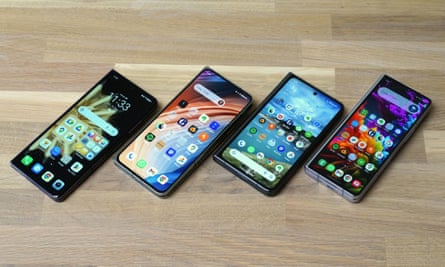
Is it a phone? Is it a tablet? A new group of folding devices are competing to appeal to consumers who want the best of both worlds, offering a phone-like screen on the outside and a large display on the inside that opens out like a book.
Each is superior at different parts of the equation, but which is the overall best? I put the most promising devices to the test in a round-by-round competition to find the folding phone champion.
The contenders
-
Samsung Galaxy Z Fold 5 – the category definer, now in its fifth generation
-
Google Pixel Fold – the Android-maker’s first attempt at a folding phone
-
OnePlus Open – the first under the brand, built on third-gen tech from parent company Oppo
-
Honor Magic V2 – the third-gen foldable due to go on sale in Europe from the end of January
The dimensions of the outside screen make a huge difference to how phone-like the folders can be, and is where the devices differ most.
The Z Fold 5 has a long and thin outside screen, which makes typing cramped. Pixel Fold is short and squat, which makes the keyboard full width but apps a bit short and stocky. The Open and Magic V2 are more phone-like, making using them folded much easier.
Winner: Honor Magic V2 – the thinnest and most phone-like experience available.
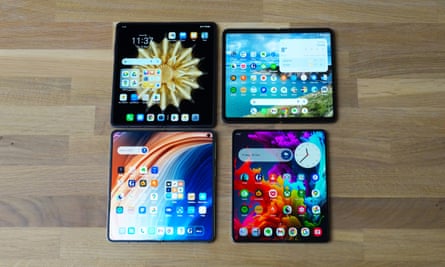
The size and shape of the inside screen is a bit more consistent between the brands. The OnePlus and Honor are the most square when unfolded, while others are slightly longer on one side similar to an iPad display.
Similarly, all the screens have high refresh rates, are crisp and bright. Some are better at repelling fingerprints and glare from overhead lights, while others, such as the Samsung, support stylus input.
The big differences are in the feel of the screen under your finger and the visibility of the crease where it folds at its centre. The Z Fold 5 has the firmest-feeling screen, but the Open has the least visible crease beating all the others.
Winner: OnePlus Open – the least visible and smoothest-feeling crease.
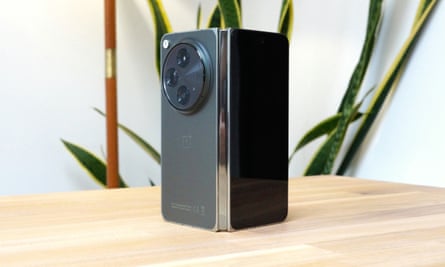
The design and operation of the hinge is a crucial part of what makes a folder good to use. The Magic V2 has the slimmest hinge, which helps get it out of the way when used as a phone, but it cannot hold the screen open at as wide a range of angles. The Open and Pixel Fold are a little thicker, with the later being stiffer to open and requiring a little extra push at the end to be completely flat. The Z Fold 5 hinge is the largest, stiffest and most robust feeling of the group, allowing the folder to be held open at a range of angles a little more securely.
Winner: OnePlus Open – it strikes the best balance between thickness and opening action.
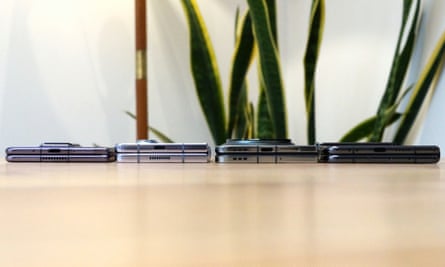
The thicker and heavier the folder, the harder it is to use like a phone or tablet in one hand. The Pixel Fold is significantly heavier than the rest at 283g, with the Z Fold 5 next at 253g. The Open and Magic V2 are noticeably lighter at 239g and 237g respectively.
The contenders vary in thickness when folded, which can make them bulkier in the hand and pocket. The Z Fold 5 is the thickest at 13.4mm with the Pixel Fold and Open following up at 12.1mm and 11.7mm respectively.
Winner: Honor Magic V2 – at just 10.1mm it is about the same as a regular phone in a case.
5
Durability, repair and sustainability
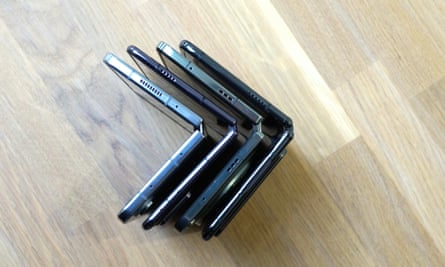
All folding phones are more fragile than regular phones because of the softer material needed to allow the display to bend in half. But they differ in water and dust resistance, access to repair options if something goes wrong and in the materials they use in their construction.
Samsung and Google lead the way with IPX8 water resistance – the same as a regular phone. The Open only has IPX4 splash resistance and the Magic V2 lacks any rating, so keep them away from bodies of water.
All the manufacturers will repair broken devices, whether in-warranty or out of it. Samsung has the most comprehensive network of first and third-party repairers, but Google also offers various direct and third-party services, including the high street store iSmash. OnePlus has its own repair service, as does Honor.
Samsung and Google take things a step further by also offering parts and instructions for those brave enough to attempt to repair a broken device at home. The Pixel Fold and Z Fold 5 are also made of recycled materials, including aluminium, glass and plastic.
Winner: Samsung Galaxy Z Fold 5 – the best water resistance, use of recycled materials and the widest repair network edge it.
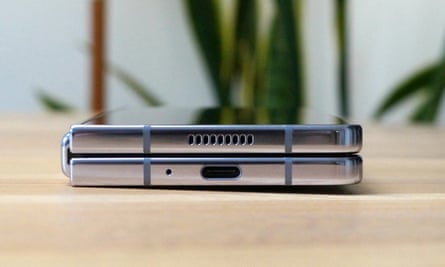
Battery life on most tablet-size folders is as good as standard phones. The Pixel Fold brings up the rear with about 32 hours between charges, with the Open coming in second with a solid 46 hours just behind the Z Fold 5 with 48 hours. The Magic V2 is predicted to have roughly similar battery life, but cannot be properly tested until the release of the European version.
Winner: Samsung Galaxy Z Fold 5 – it simply lasts longer on a charge.
Three of the folders use the same Qualcomm Snapdragon 8 Gen 2 chip, with the Pixel Fold using Google’s Tensor G2 chip instead. All four are fast and snappy, but the Pixel Fold brings up the rear on raw performance, being slightly slower and hotter in operation.
Winner: Samsung Galaxy Z Fold 5 – its customised Qualcomm chip is slightly faster.
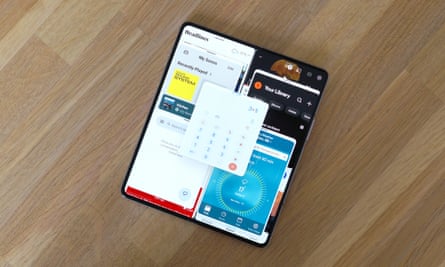
All four of the folders run Android, but the way their software handles the multiple screens, multitasking and high-end features varies.
The Pixel Fold gets Android updates ahead of the competition, but it is also the least powerful when it comes to multitasking, limited to two apps on screen at a time and unable to force apps to resize to fit the display.
The Open has some good ideas in its OxygenOS about how to handle multiple on-screen apps. It has a virtual “canvas” that’s larger than the physical screen, so apps can stay full size to avoid resizing issues and move into full view on the screen when needed. The Magic V2 also has a more powerful multitasking system than the Pixel allowing multiple small windowed apps as well as a split screen system, but it is less intuitive to use.
Samsung’s OneUI can resize apps, have as many as eight on screen at any one time, offers several routes to launching and adding apps into multiple layouts and can remember them for next time. Samsung’s tools such as Flex mode improve using the phone partially open or closed, while custom home screen layouts for the inside and outside screens and many other tweaks take full advantage of the form. Finally, Samsung’s Dex mode turns the Z Fold 5 into an Android desktop computer when plugged into a screen and keyboard.
Winner: Samsung Galaxy Z Fold 5 – the most powerful and customisable software for the folding form.
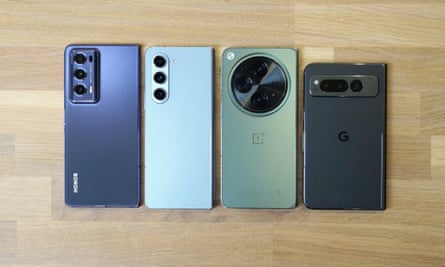
Foldables cannot match the best cameraphones, but some come much closer than others. The Magic V2 has the most limited zoom, with just 2.5x magnification. The Z Fold 5 has a 3x optical zoom and solid main camera. The Open steps it up a notch with a more capable 3x/6x zoom and great main camera, but Google’s photography dominance prevails.
Winner: Google Pixel Fold – it has a 5x optical zoom and camera that is about as close to a top standard phone and as you can get.
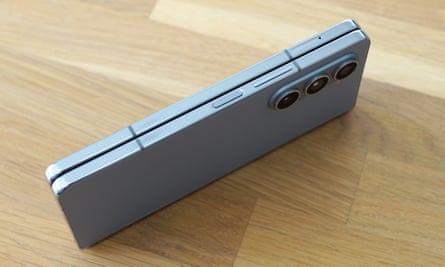
Even with some real competition, folders are still extremely expensive. The Z Fold 5 and Pixel Fold cost the most at £1,749 ($1,799.99), while the Open is slightly cheaper at £1,599 ($1,700). The Honor Magic V2 is expected to cost a similar amount.
Trade-in offers can help reduce the cost but none of these folders are particularly affordable.
Winner: OnePlus Open – it’s slightly cheaper.
Despite finally having meaningful competition in the folding phone-tablet space, Samsung’s Galaxy Z Fold 5 wins in four separate categories, ultimately coming out on top.
Excellent alternatives are available for those that do not want a Samsung, with the OnePlus Open giving the Z Fold 5 a real run for its money winning in three categories. Google’s Pixel Fold takes the throne in the all important camera section, while Honor’s Magic V2 shows a glimpse of where the devices are heading this year: thinner and less cumbersome.



